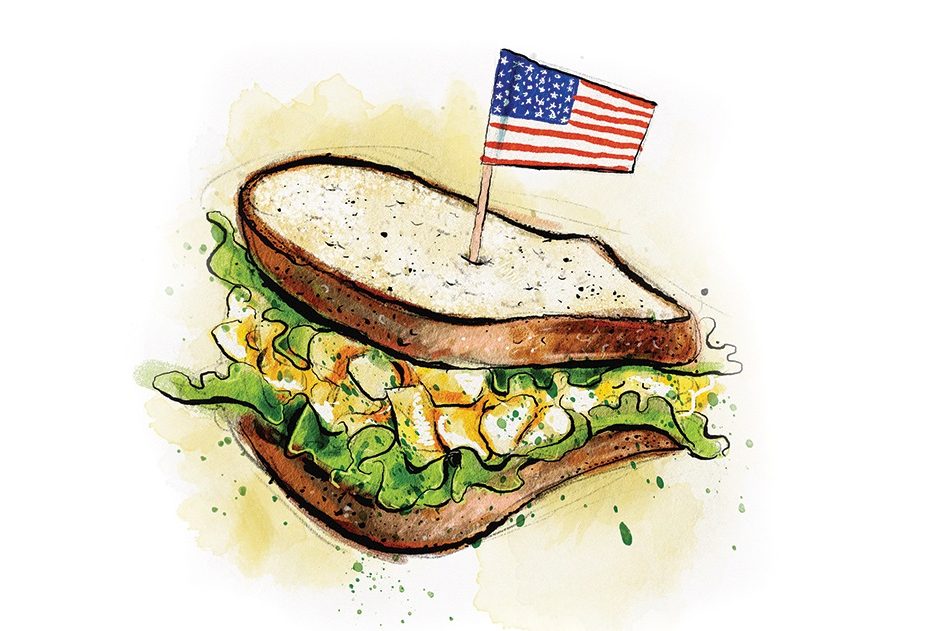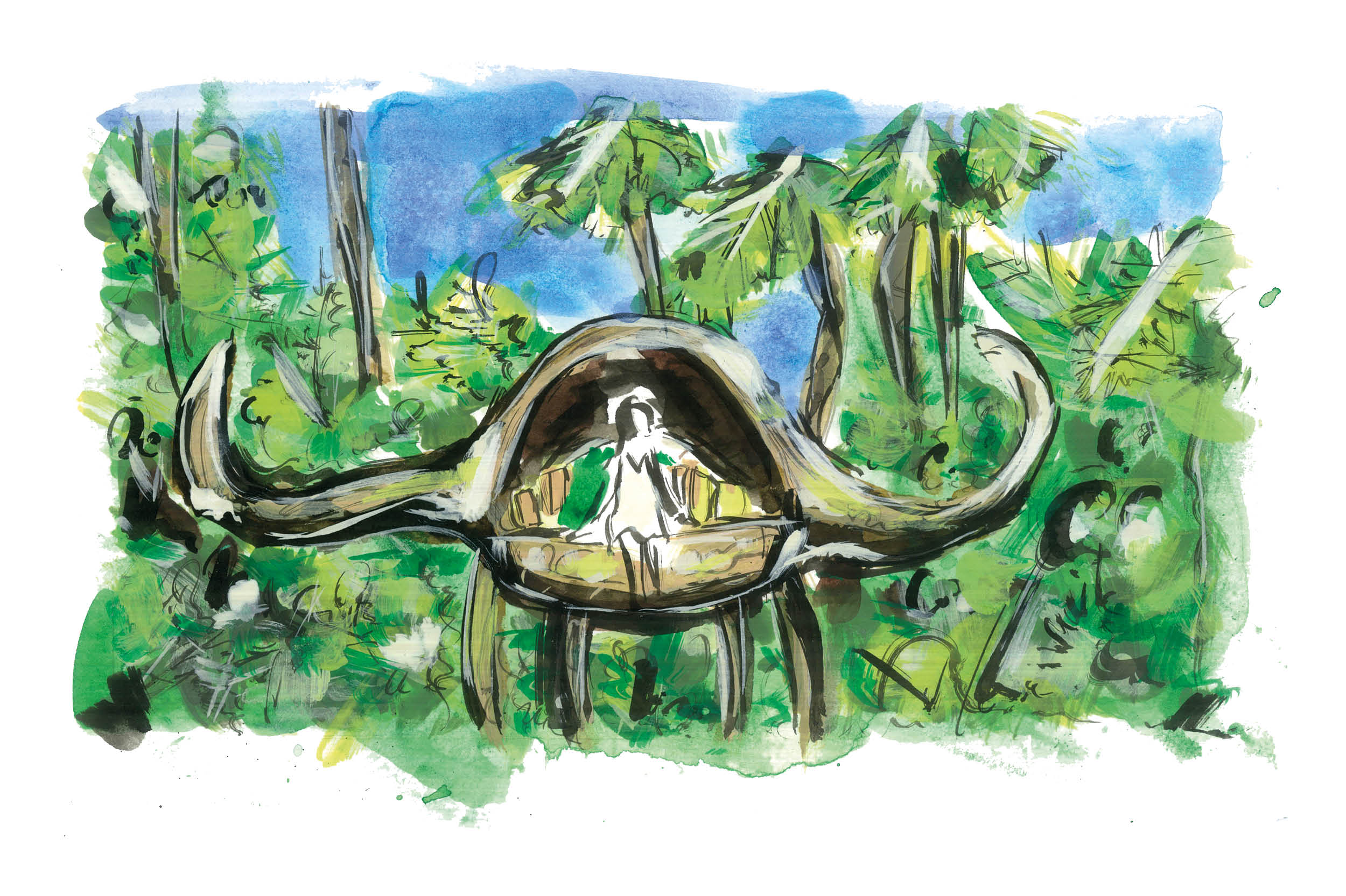In Spain you can eat all day — and we did. Earlier in the summer, I spent two days in Andalusia, and most of the forty-eight hours were taken up by mealtimes. A breakfast of the sweet porridge poleá started the day, then ham-tasting for a mid-morning snack followed by a two-hour lunch. I didn’t think it was possible to eat all day, but when the food is this good and meticulously chosen, it is.
Spanish chef José Pizarro led the way, taking us to his favorite restaurants and showing us where he sources the ham and caviar for his own. During those two days I ate some of the best fish I’ve ever tasted — seafood croquettes on the beachfront at Chiringuito Tropicana in Málaga, creamy black squid-ink rolls with flaky crusts dipped in aioli at Eslava; locals are mad for these restaurants. When we visited Eslava, they lined up past eleven for a table.
Our first afternoon in Seville, we hunted for the best tapas. In a large square beneath the red walls of the Iglesia Colegial del Divino Salvador, we snacked on fried cuttlefish, which is served in paper cones so it can be eaten on the go. As evening fell we stopped for bowls of hot stew at Casa Morales, a nineteenth-century family-run tavern near the cathedral. Into the stew goes all the leftover meat and fish from the day before — chorizo, beef and pork cuts, tripe, cuttlefish, which we ate with crusty white bread and a glass of Rioja.
That evening we ate at the Cinco Jotas restaurant, sitting out in the dusk while swallows dipped in and out of the streetlights. Ham and crusty bread were all we had for dinner and in Seville, it’s all you need: the ham from Cinco Jotas pigs is exquisite. Served at room temperature, it melts like butter on your tongue and leaves a nutty aftertaste thanks to the pigs’ diet of acorns. It pairs perfectly with Amontillado.
The next day José took us to see the forests where Cinco Jotas keeps their pigs. The famous Iberian pigs roam the wooded hills of the Dehesa, a fertile landscape northwest of Seville near the border with Portugal. The pigs are agile and surprisingly beautiful, with sleek black bodies, long thin legs and flexible ankles specially adapted for trekking the Andalusian hills and forests. They are well-fed but not fat and the meat is dark red with muscle. This year the herd is only sixteen — a small crop — but it cannot grow larger than twenty-five. Spanish law requires that each Iberian pig gets two and a half acres to roam, and a Cinco Jotas pig gets double that — some five acres each of cork-oak forest. The quality and quantity of the land and the mast they feed on is what gives the ham its rich, oaky flavor and color.
After meeting the pigs, we visited the cellars where Cinco Jotas has been making ham since the late nineteenth century. The cellars are dark and cool. Red brick walls keep out the summer heat and thousands of hams hang from the ceiling along wide corridors. The floor is slick with fat, which drips gently from the hanging hams like honey falling from combs. The cellars are open to visitors, so you can watch the experts selecting hams for restaurants around the world. Chefs and ham-makers come from all over to train in ham selection and carving at the Cinco Jotas cellars.
The expert we met can tell the difference between a good ham and a Cinco Jotas ham using only his nose. He deftly punctures the joint at four different points, smelling each before quickly moving on to the next. He might go through an entire order without finding a ham that is just right; the rest he will tag and send to the cellar’s warmer south wing to mature for a few more months. Each ham is meticulously stored according to its age — some need three years to mature, some four. Cinco Jotas stores their clients’ hams for them since most restaurants — even the best — don’t have exactly the right temperature and humidity to keep them. José Pizarro comes to the cellars to choose the hams for his restaurants a year in advance. It can take all day.
José then cooked us lunch. He wanted to try out recipes for his new restaurant in London (called Lolo, which will open later this year) and we were happy to oblige. After more ham and sherry-tasting we sampled his new rib recipes, as well as pork chops so fresh they can be served underdone. We didn’t have a salt cellar on the table, but we did have caviar from Caviar de Riofrío; a dollop on top of scrambled eggs with sliced tomatoes in olive oil, pickled peppers and artichoke on the side.
Caviar de Riofrío was our next stop, the world’s first organic caviar farm, near Granada. In a valley under the Sierra de Loja, giant sturgeon glide lazily in freshwater pools. The fish are kept in these pools until they are eighteen, at which time they are separated according to sex — since you can’t tell sturgeons’ sex by looking at them, each one gets an ultrasound to check. The males are sold to restaurants, and the females have their eggs harvested.
After a dip in the pools with the sturgeon we sampled the caviar. The fresh caviar — only days old — has a clear, pure taste, like the cold sea-blast of an oyster. The matured eggs are much saltier with a deep, lingering aftertaste. They go especially well on scrambled eggs. A perfect start to any morning.
This article was originally published in The Spectator’s August 2024 World edition.























Leave a Reply